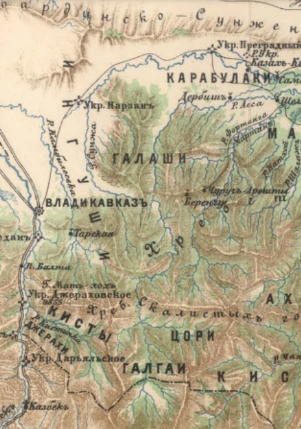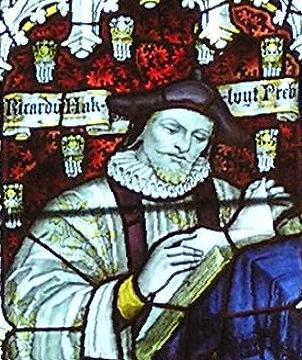|
Ingush Societies
Ingush societies or shahars () were ethnoterritorial associations of the Ingush people, Ingush based on the geographical association of several villages and intended for conditional administrative-territorial delimitation of the Ingush ethnic group. The formation and functioning of most of them dates back to the late Middle Ages (16th – 19th centuries). During this period, their boundaries, number and names changed. The names of societies mainly came from the names of the area of their localization, that is, they were based on the geographical principle. Despite the fact that during this period the Ingush lived in relatively closed conditions of mountain gorges, which contributed to more demarcation in terms of territoriality than rallying around a single center, they retained the self-consciousness of a single ethnic group based on a common culture and a single language. Ingush societies in the literature are sometimes called ''shahars'' () The term "shahar" meant in the ancien ... [...More Info...] [...Related Items...] OR: [Wikipedia] [Google] [Baidu] |
Ingush People
Ingush (, pronounced ), historically known as ''Durdzuks'', ''Gligvi'' and ''Kists (ethnonym), Kists'', are a Northeast Caucasian languages, Northeast Caucasian ethnic group mainly inhabiting the Republic of Ingushetia in central Caucasus, but also inhabitanting Prigorodny District, North Ossetia–Alania, Prigorodny District and town of Vladikavkaz of modern-day North-Ossetia. The Ingush are predominantly Sunni Muslims and speak the Ingush language. Ethnonym Ingush The ethnonym of the "Ingush" came from the name of the medieval Ghalghai village (''aul'') of Angusht, which by the end of the 17th century was a large village in the Tarskoye, Tarskoye Valley. The toponym "Angusht" itself is a composition of three words: "an" (''sky'' or ''horizon''), "gush" (''visible'') and the suffix of place "tĕ" (indication of position or location), literally translating as a "place where the horizon is seen". Ghalghai The endonym of Ingush people is ''Ghalghai'' (, ), which most often ... [...More Info...] [...Related Items...] OR: [Wikipedia] [Google] [Baidu] |
Fyappiy
The Feappii () were an Ingush people, Ingush subgroup (''Ingush societies, society'') that mostly inhabited the mountainous Fappi region of Ingushetia in the Caucasus. Historically, they bordered on the west with Dzherakh, on the east with Khamkhins, on the north with Nazranians, and in the south with Gudomakarians. The center of the society was the fortified village (''aul'') of Erzi (village), Erzi or Metskhal. During the 16th and 17th centuries, part of the Feappii migrated to Tusheti, Georgia (country), Georgia, due to a lack of land. The descendants of the migrants are known as Bats people. In the 17th and 18th centuries, another wave of migration occurred, to the region of Aukh (modern-day Dagestan). In 1733, due to concerns about the expansion of the Ottoman Empire, Ottoman Turks in the region, the Feappii, together with the Dzherakh, Dzherakhs and Khamkhins, established ties with the Kingdom of Kartli. As the Russian Empire began expanding its territories in the Caucasus ... [...More Info...] [...Related Items...] OR: [Wikipedia] [Google] [Baidu] |
Moscow
Moscow is the Capital city, capital and List of cities and towns in Russia by population, largest city of Russia, standing on the Moskva (river), Moskva River in Central Russia. It has a population estimated at over 13 million residents within the city limits, over 19.1 million residents in the urban area, and over 21.5 million residents in Moscow metropolitan area, its metropolitan area. The city covers an area of , while the urban area covers , and the metropolitan area covers over . Moscow is among the world's List of largest cities, largest cities, being the List of European cities by population within city limits, most populous city entirely in Europe, the largest List of urban areas in Europe, urban and List of metropolitan areas in Europe, metropolitan area in Europe, and the largest city by land area on the European continent. First documented in 1147, Moscow became the capital of the Grand Principality of Moscow, which led the unification of the Russian lan ... [...More Info...] [...Related Items...] OR: [Wikipedia] [Google] [Baidu] |
Nauka (publisher)
Nauka () is a Russian publisher of academic books and journals. Established in the USSR in 1923, it was called the USSR Academy of Sciences Publishing House until 1963. Until 1934 the publisher was based in Saint Petersburg, Leningrad, then moved to Moscow. Its logo depicts an open book with Sputnik 1 above it. Nauka was the largest scientific publishing house in the USSR, as well as in the world at one time (in 1982). It was also notable for being the publisher of the USSR Academy of Sciences and its branches. In 1972 Nauka published 135 scientific journals, including 31 physical and mathematical, 24 chemical, 29 biological and five popular science journals: ''Priroda'' (Nature), ''Zemlya i Vselennaya'' (Earth and the Universe), ''Khimia i zhizn'' (Chemistry and Life), ''Kvant (magazine), Kvant'' (Quantum), and ''Russkaya rech'' (Russian speech). The greater part of Nauka's production were monographs. It also published thematic collected works, reference books, textbooks and fo ... [...More Info...] [...Related Items...] OR: [Wikipedia] [Google] [Baidu] |
Leningrad
Saint Petersburg, formerly known as Petrograd and later Leningrad, is the List of cities and towns in Russia by population, second-largest city in Russia after Moscow. It is situated on the Neva, River Neva, at the head of the Gulf of Finland on the Baltic Sea. The city had a population of 5,601,911 residents as of 2021, with more than 6.4 million people living in the Saint Petersburg metropolitan area, metropolitan area. Saint Petersburg is the List of European cities by population within city limits, fourth-most populous city in Europe, the List of cities and towns around the Baltic Sea, most populous city on the Baltic Sea, and the world's List of northernmost items#Cities and settlements, northernmost city of more than 1 million residents. As the former capital of the Russian Empire, and a Ports of the Baltic Sea, historically strategic port, it is governed as a Federal cities of Russia, federal city. The city was founded by Tsar Peter the Great on 27 May 1703 on the s ... [...More Info...] [...Related Items...] OR: [Wikipedia] [Google] [Baidu] |
Hakluyt Society
The Hakluyt Society is a text publication society, founded in 1846 and based in London, England, which publishes scholarly editions of primary records of historic voyages, travels and other geographical material. In addition to its publishing role, the Society organises and participates in meetings, symposia and conferences relating to the history of geographical exploration and cultural encounter. It is a registered charity and a non-profitmaking institution administered by a voluntary team of council members and officers. Membership is open to all with an interest in its aims. The Society is named after Richard Hakluyt (1552–1616), a collector and editor of narratives of voyages and travels and other documents relating to English interests overseas. The Society's logo, which appears on the cover of all volumes, is a vignette of Ferdinand Magellan's ship, the '' Victoria''. Foundation The Society was created at a meeting convened in the London Library, St James's Squa ... [...More Info...] [...Related Items...] OR: [Wikipedia] [Google] [Baidu] |
Orstkhoy
The Orstkhoy, historically commonly known under their exonyms: ''Karabulaks'', ''Balsu'', ''Baloy'', are a historical ethnoterritorial society among the Chechens, Chechen and Ingush people, Ingush peoples. Their homeland is in the upper reaches of the Assa (river), Assa and Fortanga rivers in the historical region of Orstkhoy-Mokhk (the Sernovodsky District and the border part of the Achkhoy-Martanovsky District of the Chechenya, Chechen Republic, Russia, as well as most of the Sunzhensky District of Ingushetia). In the tradition of the Chechen ethno-hierarchy, it is considered one of the nine historical Tukkhum, Chechen tukkhums, in the Ingush tradition as one of the seven historical Ingush societies, Ingush shahars. Name The name Orstkhoy in their native language (Chechen language, Chechen or Ingush language, Ingush) is "Орстхой", written as "Orstxoj" in the old Latin writing system. Different theories exist around the origin of the word: * 1. The theory of it coming f ... [...More Info...] [...Related Items...] OR: [Wikipedia] [Google] [Baidu] |




